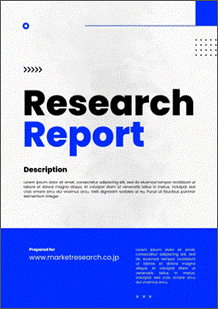 | • レポートコード:BONA5JA-0254 • 出版社/出版日:Bonafide Research / 2024年2月 • レポート形態:英文、PDF、58ページ • 納品方法:Eメール • 産業分類:製造&産業 |
| Single User(1名様閲覧用、印刷不可) | ¥372,400 (USD2,450) | ▷ お問い合わせ |
| Corporate License(閲覧人数無制限、印刷可) | ¥524,400 (USD3,450) | ▷ お問い合わせ |
• お支払方法:銀行振込(納品後、ご請求書送付)
レポート概要
日本のセメント産業は、1875年にまで遡る長い歴史を持ち、急速な都市化と戦後の復興を原動力に、生産量、品質、技術革新の面で世界のリーダー的存在となりました。 持続可能性とエネルギー効率を重視することで知られ、日本のインフラストラクチャーの重要な構成要素として成長を続けています。セメントは日本において文化的にも大きな意味を持っており、粘り強さや堅固さを象徴するものとして、ビジネスにおいても品質、耐久性、耐震性などが非常に重視されています。最近の傾向としては、低炭素セメントやリサイクル材料など、環境にやさしい代替品への需要が高まっており、これは環境の持続可能性に対する日本の強い意志を示しています。さらに、プレキャストコンクリートソリューションは、その効率性と審美性により受け入れられ、業界の革新を促進しています。日本のセメント市場は、特に大都市圏における国内のインフラ整備の取り組みから大きな恩恵を受けており、拡大のチャンスがいくつかあります。持続可能な建設方法を支援する政府の取り組みは、業界の勢いを後押しし、さらなる成長と革新の機会を提供しています。日本コンクリートショーやエコビルディングエキスポなどの業界の主要イベントは、ネットワーク構築、知識の交換、新技術や新製品の発表の機会を提供し、業界の認知度と世界レベルでの競争力を高めています。しかし、需要パターンや市場力学に影響を与える可能性がある景気変動や人口動態の変化への対応は、潜在的な障害となる可能性があります。 とはいえ、豊かな歴史、文化的意義、持続可能性への継続的な取り組みにより、日本のセメント業界は、今後長年にわたって日本のインフラ開発の柱となることが期待されています。
Bonafide Researchが発行した調査レポート「日本のセメント市場の概要、2029年」によると、日本のセメント市場は2029年までに270億ドルを超える市場規模に達すると予測されています。 セメント業界では、品質と安全性を保証するために日本工業規格(JIS)への厳格な準拠が不可欠です。 これらの規格は製造工程や材料のさまざまな要素に影響を与え、製造業者に遵守を義務付ける特定の要件を課しています。JIS規格に準拠することは、消費者の信頼を高めるだけでなく、業界の信頼性と能力に対するイメージを強化することにもつながります。さらに、環境規制は業界の活動に影響を与えています。排出削減や資源効率性の義務化は、メーカーが持続可能な慣行を採用し、環境にやさしい技術に投資することを促します。日本がカーボンニュートラルを目指している中、業界は業務効率と製品品質を維持しながら環境への影響を低減する新たなソリューションを開発する必要があります。この持続可能性に向けた取り組みは、世界的な環境目標に合致するだけでなく、日本のセメント生産者をグリーンテクノロジーと資源管理におけるイノベーターとして位置づけることにもなります。セメント市場はセグメントに分けられ、それぞれ独自の製品と価格戦略が採用されています。価格体系はセメントの種類、品質、地域の需要に応じて異なります。標準的なポルトランドセメントは通常、1トンあたり8,000円から10,000円で販売されており、比較の基準となっています。しかし、高性能セメントや低炭素セメントなどの特殊なセメントは、その特徴や利点から、より高い価格設定となっています。さらに、規制への準拠、技術の向上、顧客嗜好の変化なども価格動向に影響を及ぼしており、生産者は市場動向に機敏かつ柔軟に対応することが求められています。
水硬性セメントの一種である混合セメントは、ポルトランドセメント(50~70%)と、フライアッシュ、スラグ、石灰石などの補助セメント質材料(SCM)(30~50%)を混合して作られます。最も一般的な水硬性セメントであるポルトランドセメントは、純粋なカルシウム、シリコン、アルミニウム、鉄の酸化物から作られます。その製造工程では、石灰石と粘土を高温(約1450℃)で加熱し、生成されたクリンカーを微粉末に粉砕します。 白色セメントは、その組成が特徴的であり、ポルトランドセメントと類似していますが、異なる原材料と厳密に管理された製造工程により、独特な白色を実現しています。 白色セメントは、鉄分やその他の着色原因となる酸化物の含有量が少ない場合が多いです。このグループには、住宅、商業、インフラなど、さまざまな建設分野が含まれ、これらのセメントがさまざまな建設プロジェクトで幅広く使用されていることを反映しています。
日本のセメント市場は、確立された競合企業と成長中の競合企業の組み合わせによって特徴づけられます。太平洋セメント、住友大阪セメント、新日鉄住金セメントなどの大手企業は、その高い市場シェアと長い歴史により、業界を支配しています。これらの主要企業は、業界に歴史的な影響を与えており、その将来の方向性にも影響を与え続けています。さらに、琉球セメントなどの地域企業は、日本国内の特定の地域で事業を展開し、カスタマイズされたソリューションを提供することで、市場の多様性を高めています。しかし、状況は変化しており、二酸化炭素の回収・利用などの特殊技術に重点を置く新たな企業も登場しています。これらの新参企業は、持続可能性と環境への責任を促進するセメント製造の新しい技術を導入することで、従来の市場力学を覆そうとしています。新しい視点と最先端の技術が持ち込まれることで、既存の企業にとっては課題と可能性の両方が提示され、競争が促進され、セメント業界全体の持続可能性と効率性が向上することになります。
市場チャネルに関しては、セメント業界は従来、企業間取引(B2B)に依存しており、セメントメーカーと建設会社との長年にわたる関係が取引の大半を占めてきました。しかし、デジタル技術の革新が徐々に状況を変えつつあります。オンラインプラットフォームは、より小規模な取引や、特殊なセメント製品の消費者への直接販売を可能にすることで、注目を集めています。顧客、特に小規模な請負業者やDIYプロジェクトに取り組む消費者は、利便性とアクセス性が向上するこのデジタル革命の恩恵を受けるでしょう。デジタルチャネルを活用することで、セメント業界は対象範囲を広げ、調達プロセスを迅速化し、全体的な効率性と消費者満足度を高めることができます。インターネットプラットフォームが拡大するにつれ、セメントメーカーはデジタル市場における新たな機会を活用するために、マーケティングおよび流通戦略を修正する必要があります。日本のセメント市場の長期的な成長性には、いくつかの要因が寄与しています。まず、全国的なインフラ開発や建設プロジェクトの継続により、市場には一貫した成長の可能性があることが理解されています。この拡大を最大限に活用し、競争力を維持するためには、エネルギー効率や持続可能な素材における技術的進歩が重要となります。
レポート目次目次
1. エグゼクティブサマリー
2.市場構造
2.1.市場考察
2.2. 前提
2.3. 制限
2.4. 略語
2.5. 情報源
2.6. 定義
2.7. 地理
3. 調査方法
3.1. 二次調査
3.2. 一次データ収集
3.3.市場形成と検証
3.4. 報告書の作成、品質チェックおよび納品
4. 日本のマクロ経済指標
5.市場力学
5.1. 主要調査結果
5.2. 主要動向 – 2021年
5.3.市場の推進要因と機会
5.4.市場の抑制要因と課題
5.5.市場動向
5.6. コビッド19の影響
5.7. サプライチェーン分析
5.8. 政策および規制の枠組み
5.9. 業界専門家による見解
6. 日本のセメント市場の概要
6.1.市場規模(金額
6.2.市場規模と予測(種類別
6.3.市場規模と予測(エンドユーザー別
7. 日本のセメント市場のセグメント別分析
7.1. 日本のセメント市場(種類別
7.1.1. 日本のセメント市場規模(混合セメント別)、2018年~2029年
7.1.2. 日本のセメント市場規模、ポルトランドセメント別、2018年~2029年
7.1.3. 日本のセメント市場規模、その他別、2018年~2029年
7.2. 日本のセメント市場、エンドユーザー別
7.2.1. 日本のセメント市場規模、住宅用別、2018年~2029年
7.2.2. 日本のセメント市場規模、商業用別、2018年~2029年
7.2.3. 日本のセメント市場規模、インフラ用別、2018年~2029年
8. 日本のセメント市場機会評価
8.1. 種類別、2024年~2029年
8.2. エンドユーザー別、2024年~2029年
9. 競合状況
9.1. ポーターのファイブフォース
9.2. 企業プロフィール
9.2.1. 企業1
9.2.1.1. 企業概要
9.2.1.2. 企業概要
9.2.1.3. 財務ハイライト
9.2.1.4. 地理的洞察
9.2.1.5. 事業セグメントおよび業績
9.2.1.6. 製品ポートフォリオ
9.2.1.7. 主要経営陣
9.2.1.8. 戦略的動きと開発
9.2.2. 企業 2
9.2.3. 企業 3
9.2.4. 企業 4
9.2.5. 企業 5
9.2.6. 企業 6
9.2.7. 企業 7
9.2.8. 企業 8
10. 戦略的提言
11. 免責条項
図表一覧
図1: 日本のセメント市場規模推移(2018年、2023年、2029年予測)(単位:百万米ドル)
図2: 種類別市場魅力度指数
図3: エンドユーザー別市場魅力度指数
図4: 日本のセメント市場のポーターのファイブフォース分析
表の一覧
表1:2023年の日本セメント市場に影響を与える要因
表2:日本セメント市場規模および予測(2018年、2023年、2029年予測)
表3:日本セメント市場規模および予測(2018年、2023年、2029年予測)
表4:日本の混合セメント市場規模(2018年~2029年)単位:百万米ドル
表5:日本のポルトランドセメント市場規模(2018年~2029年)単位:百万米ドル
表6:日本のその他セメント市場規模(2018年~2029年)単位:百万米ドル
表7:日本のセメント市場規模(2018年~2029年)における住宅用(単位:百万米ドル)
表8:日本のセメント市場規模(2018年~2029年)における商業用(単位:百万米ドル)
表9:日本のセメント市場規模(2018年~2029年)におけるインフラ用(単位:百万米ドル)
According to the research report "Japan Cement Market Overview, 2029," published by Bonafide Research, the Japan Cement market is predicted to reach market size of more than 27 Billion by 2029. Strict adherence to Japanese Industrial Standards (JIS) is essential for guaranteeing quality and safety in the cement business. These standards have an impact on different elements of manufacturing processes and materials, imposing certain requirements that producers must adhere to. JIS compliance not only increases consumer confidence, but it also strengthens the industry's image for dependability and competence. Furthermore, environmental rules influence the industry's activities. Mandates for emissions reductions and resource efficiency encourage manufacturers to adopt sustainable practices and invest in environmentally friendly technologies. As Japan strives for carbon neutrality, the industry must develop new solutions that reduce environmental effects while maintaining operational efficiency and product quality. This drive toward sustainability not only corresponds with worldwide environmental goals, but also positions Japanese cement producers as innovators in green technology and resource management. The cement market is divided into segments, each with its own set of products and pricing strategies. Pricing structures vary based on cement type, quality, and area demand. Standard Portland cement is normally priced between ¥8,000 and ¥10,000 per ton, acting as a standard for comparison. However, specialist choices, such as high-performance or low-carbon cements, fetch higher pricing due to their distinct features and benefits. Furthermore, regulatory compliance, technical improvements, and altering customer tastes all have an impact on price dynamics, necessitating the agility and responsiveness of producers to market trends.
Blended cement, a hydraulic cement variety, combines Portland cement (50-70% of the composition) and supplementary cementitious materials (SCMs) such as fly ash, slag, or limestone (30-50%). Portland cement, the most common hydraulic cement type, is made from pure calcium, silicon, aluminium, and iron oxides. Its manufacturing entails heating limestone and clay to high temperatures (about 1450°C), then grinding the resulting clinker into a fine powder. Along with these, white cement distinguishes out for its composition, which is similar to Portland cement but uses different raw ingredients and a controlled production process to achieve a distinct white shade. White cement often contains lower quantities of iron and other colour-causing oxides. This group encompasses a variety of construction sectors, including residential, commercial, and infrastructure, reflecting the wide range of applications for these cement kinds across different construction projects.
The Japanese cement market is characterised by a combination of established and developing competitors. Established giants such as Taiheiyo Cement, Sumitomo Osaka Cement, and Nippon Steel & Sumikin Cement dominate the industry due to their large market share and long history. These key players have historically impacted the industry and continue to affect its future direction. Furthermore, regional firms such as Ryukyu Cement serve certain parts of Japan, providing customised solutions and adding to the market's diversity. However, the landscape is changing, with new players focusing on specialty technologies like carbon capture and utilisation. These newcomers intend to upset traditional market dynamics by bringing novel techniques to cement manufacture that promote sustainability and environmental responsibility. As they bring new viewpoints and cutting-edge technologies to the table, they present both challenges and possibilities for incumbents, fostering competition and propelling the sector toward greater sustainability and efficiency.
In terms of market channels, the cement sector has traditionally relied on Business-to-Business (B2B) sales, with long-standing relationships between cement producers and construction companies driving the majority of transactions. However, digital innovation is progressively changing the scene. Online platforms are gaining traction by allowing for smaller transactions and direct-to-consumer sales of specialised cement goods. Customers, particularly smaller contractors and consumers working on DIY projects, will benefit from this digital revolution, which increases convenience and accessibility. By leveraging digital channels, the sector can broaden its reach and expedite the procurement process, thereby increasing overall efficiency and consumer satisfaction. As internet platforms expand, cement producers must modify their marketing and distribution strategies to take advantage of new opportunities in the digital marketplace. Several variables contribute to the Japanese cement market's long-term viability. First, there is understanding of the market's consistent growth potential, which is being fueled by continuous infrastructure development and construction projects across the country. To capitalize on this expansion and remain competitive, technical advances in energy efficiency and sustainable materials will be critical.
